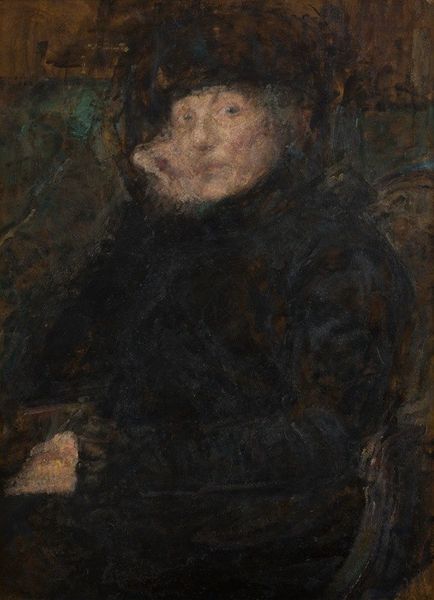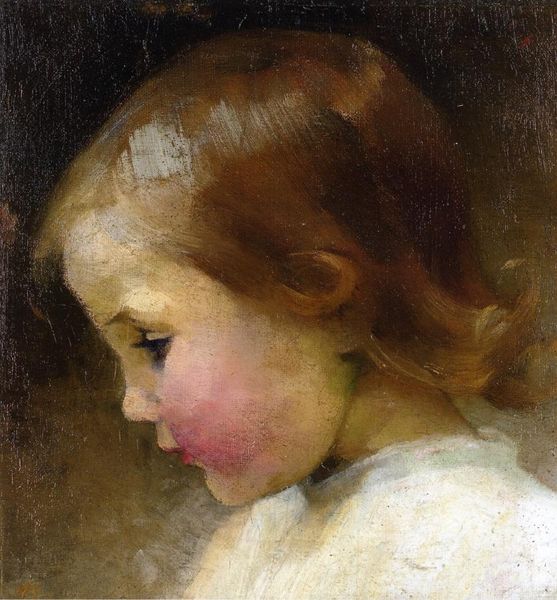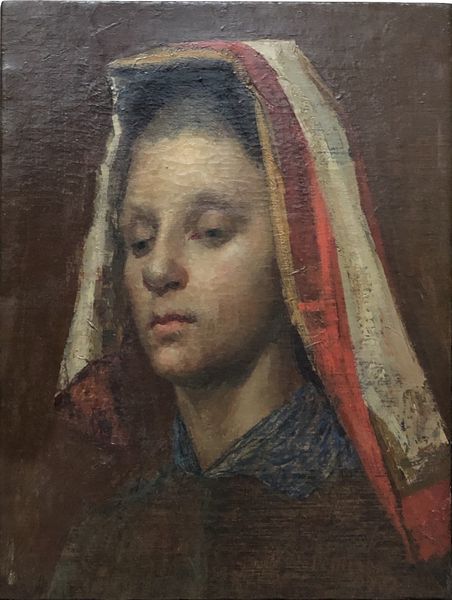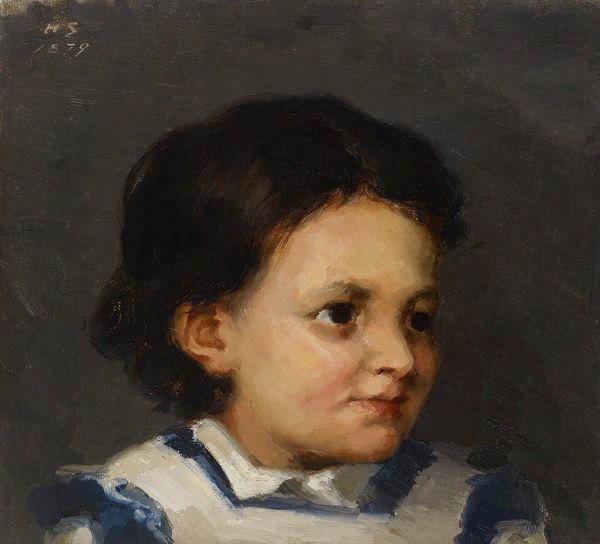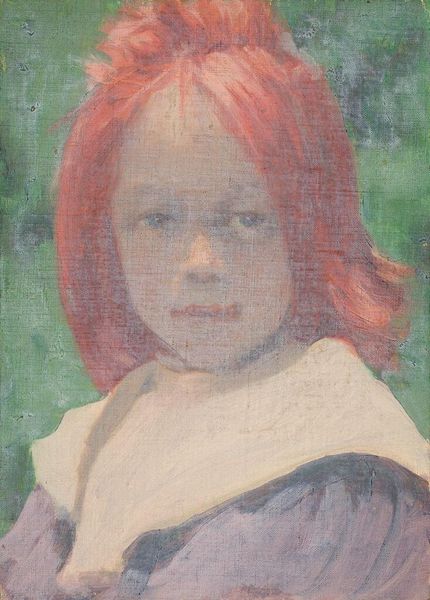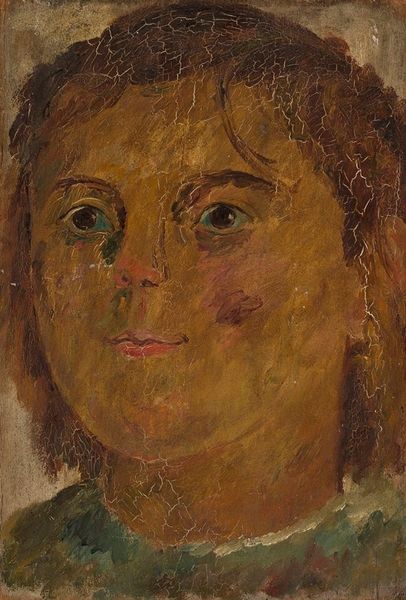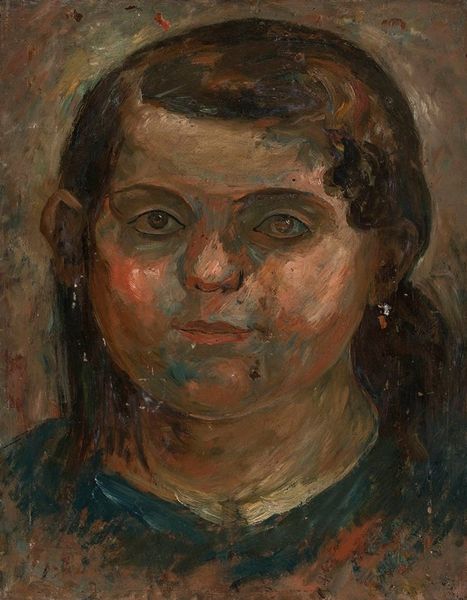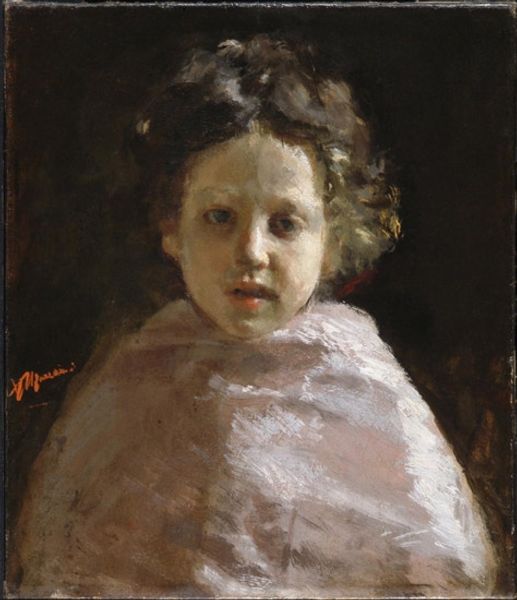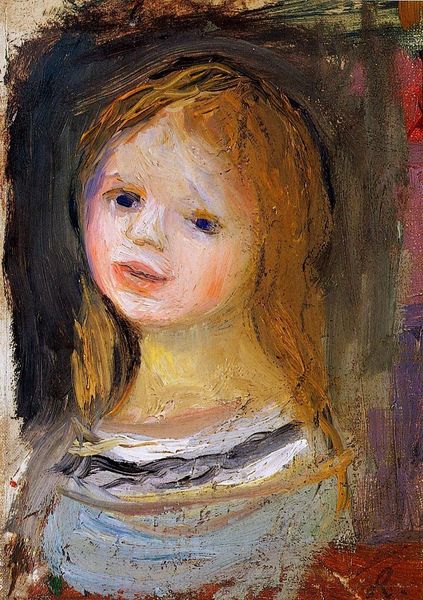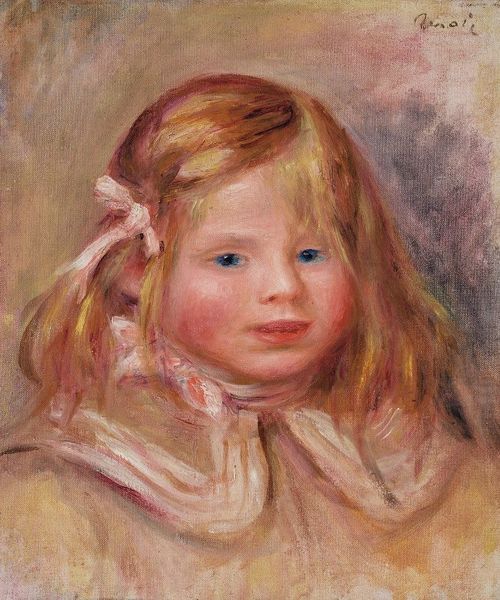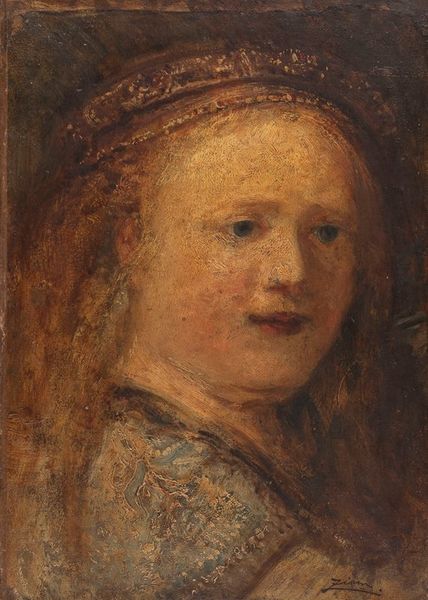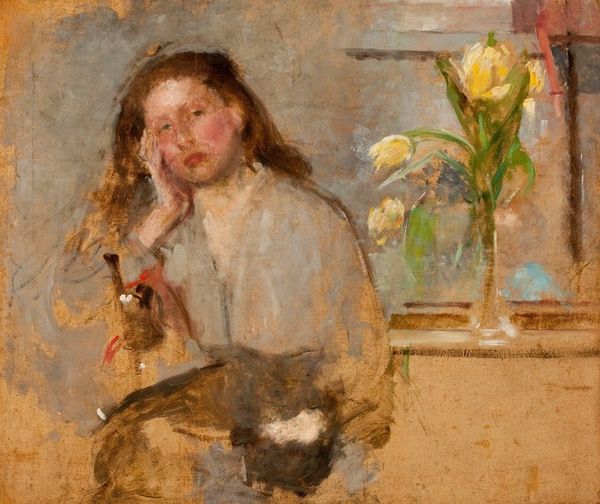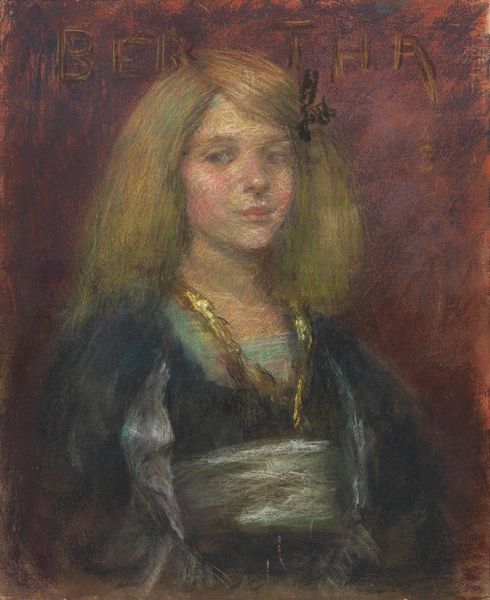
painting, oil-paint
#
portrait
#
16_19th-century
#
painting
#
oil-paint
#
oil painting
#
realism
Copyright: Public domain
Curator: I'm immediately drawn to the raw vulnerability in this portrait, it's almost haunting. The unfinished quality makes it feel incredibly intimate. Editor: Indeed. What we're looking at is "Portrait of Leokadia Falińska," painted by Leon Wyczółkowski in 1869 using oil on canvas. Given its Realist style, it invites a direct engagement with the subject that can be both moving and deeply unsettling. Curator: Yes, her gaze especially. It's an averted gaze, yet there's still a weight in it. What do you think it suggests about the sitter? Perhaps a quiet defiance in the face of expectations? Editor: The avoidance may communicate discomfort with being perceived, or possibly speaks to the social constraints placed upon young women during the 19th century. The setting in which she would’ve occupied a patriarchal framework. There are very complicated issues of gender at play here. Curator: I see what you mean. The way her face is lit also reinforces this feeling. The shadows are deep, emphasizing certain features, drawing attention to her vulnerability, yes, but also perhaps the weight she's carrying, internal or external. It reminds me of some of the paintings by Whistler with a similar melancholy mood. Editor: I agree. Moreover, realism often served as a means to represent social truths. Her expression isn’t romanticized. She appears thoughtful, weary even. This painting invites contemplation about her circumstances within her class and era, particularly for women during that time period, right? Curator: The color palette itself—the browns and muted tones—add to this sense of contemplation and quietness. It doesn't scream for attention; it demands that you pause and consider. Editor: Absolutely. And I would say that considering the gaze alongside those muddy colors it can be further argued that the overall presentation signifies social, or perhaps spiritual oppression? It speaks volumes beyond the surface level portraiture. Curator: The portrait leaves us to ponder her inner world, and perhaps the countless others similarly burdened by their circumstances. Editor: And that's what makes this work resonate even now. It opens discussions regarding past societal burdens and invites conversations about the progress needed, encouraging dialogue about inclusivity in historical representation.
Comments
No comments
Be the first to comment and join the conversation on the ultimate creative platform.
